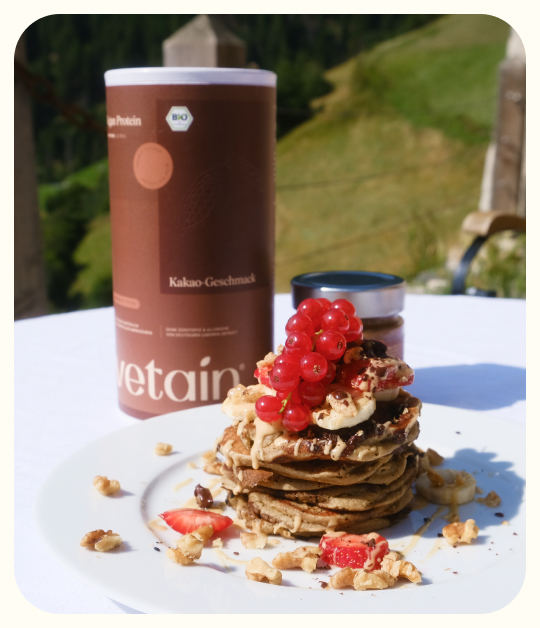A colonoscopy, also called a colon or intestinal endoscopy, allows for a more detailed examination of the intestine. It’s an important step in diagnosing intestinal diseases.
However, the first thought many people have is: My gut flora will be destroyed after the colonoscopy. For years, this idea has been widely spread by many experts and online. Here’s why that’s not entirely true, what really happens to your gut flora, and how you can support your gut.
Your Knowledge To Go: Gut Flora After a Colonoscopy
A colonoscopy and the bowel cleansing involved can temporarily alter your gut flora.
So your gut flora isn’t destroyed after a colonoscopy — it’s just temporarily out of balance.
During this time, you may experience temporary symptoms like diarrhea. Long-term issues are very rare and should be checked by a doctor if they occur.
How much your gut flora is affected depends on various factors such as your current microbiome health, the type of laxative used, and more.
Many people use probiotics and prebiotics after a colonoscopy.
Is Your Gut Flora Destroyed After a Colonoscopy?
For a long time, people believed that gut flora was destroyed after a colonoscopy and had to be completely rebuilt. While this might have been true in the past due to more aggressive laxatives, today it’s mostly a myth. A colonoscopy and the associated bowel cleansing can temporarily alter the gut flora – but they do not destroy it completely.
Let’s take a closer look:
A colonoscopy generally does not cause permanent damage to your gut flora.
Instead, there’s usually a short-term change in the composition and amount of bacteria.
This happens because the bowel cleansing process washes out some of the bacteria in your gut.
The gut flora usually recovers on its own after a short time — typically within about two weeks.
Many studies, such as the one by Jalanka et al. (2015), confirm exactly this: a temporary change in gut flora composition and abundance can be observed shortly after bowel cleansing and colonoscopy, but within a few weeks, values usually return to normal.
So: Gut flora destroyed after colonoscopy? No! Just a bit off balance and temporarily weakened.
Factors That Influence How Much Your Gut Flora Changes
Type of laxative: In the past, aggressive agents like sodium phosphate were often used, which could cause significant dysbiosis. Today, gentler solutions with PEG (polyethylene glycol) are common and have less impact on your microbiome.
Individual gut flora: People with a diverse and strong gut microbiome usually recover faster than those who already had digestive issues, recent interventions, or gut-related conditions. If your colonoscopy was done because of acute digestive problems, your flora might already be weakened — and the laxative preparation doesn’t exactly help.
Diet after colonoscopy: What you eat afterward plays a key role! Why? You’ll find out below.
Common Symptoms After a Colonoscopy
Many people notice aftereffects following a colonoscopy — usually lasting a few days. That’s completely normal to some extent since your body has gone through an intervention. Gut flora “destroyed” after colonoscopy? Here’s what you might experience:
Abdominal pain
Pain can occur because gas is introduced into the intestine during the procedure, which expands it.
Duration: Usually a few hours to 1–2 daysFatigue
You may feel tired or exhausted — no wonder, both you and your gut have had a long day. Sedation, fasting, and fluid loss all play a role.
Duration: Usually up to 1 dayDiarrhea
Many people experience diarrhea after a colonoscopy because the gut flora is temporarily altered (not destroyed!) and the intestines are more sensitive.
Duration: Usually 1–2 daysNo bowel movement
Your intestines are completely empty after the procedure, and digestion may take a little time to normalize again.
Duration: Usually 1–2 daysBloating and gas
Residual gas can cause pressure or fullness.
Duration: Usually a few hours to 1–2 daysNausea
A completely empty stomach, the laxative, or the sedative can all contribute to nausea.
Duration: Usually a few hours
Short-term mild symptoms are generally normal. But it’s important to distinguish normal reactions from real complications. If you experience pain, bleeding, or unusual symptoms after your colonoscopy, contact your doctor for a medical check-up.
By the way, many people simplify it by saying their gut flora was destroyed after a colonoscopy — now you know what’s really behind that.
Restoring Gut Flora After a Colonoscopy
Many want to support their gut and rebuild their gut flora after a colonoscopy. While your body usually manages this on its own, there are simple ways to help restore balance. Whether you believe your gut flora was “destroyed” or just “disturbed” — prebiotics and probiotics can help.
Prebiotics
Fiber that serves as food for your gut bacteria.
They act as “fuel” for beneficial microorganisms.Found in: Oats, psyllium husk, flaxseed, chicory, onions, garlic, bananas.
That’s why many people eat a banana after a colonoscopy.
Probiotics
Live “good” bacteria believed to promote a healthy, diverse gut flora.
Found in: Yogurt with live cultures, fermented vegetables (e.g. sauerkraut, kimchi), kombucha, kefir, and supplements.
Whether or not you should take probiotic supplements after your colonoscopy is individual and best discussed with your doctor.
Highly processed foods, alcohol & similar products are best avoided. Think of it this way: if your gut flora were “destroyed” after a colonoscopy, you’d understand why alcohol might not be the best choice right now.
What to Eat After a Colonoscopy
You can usually return to your regular diet shortly after your colonoscopy — but give your gut a bit of time to recover before eating certain foods:
Very fatty foods
Spicy or heavily seasoned dishes
Gas-producing foods (onions, cabbage, beans, etc.)
Highly processed foods
Imagine having a small wound in your mouth — lemon juice or spicy food would sting, right? That’s similar to how your gut feels when it’s sensitive after a colonoscopy.
Once your symptoms subside and digestion feels normal again (and as long as your doctor hasn’t advised otherwise), you can enjoy your favorite foods again — even that spicy curry you love.
For the first few days, focus on light, gut-friendly meals like potatoes, rice, vegetables, soups, bread with jam, semolina, or oats. Make sure to drink enough water and restore your electrolytes.
And if you’re wondering: When can you eat after a gastroscopy?
Usually, once you’re fully awake and feeling well again!
Conclusion
A colonoscopy can cause temporary turbulence in your gut — no surprise, considering the process. Afterward, your gut flora may be temporarily disrupted until it recovers. This can cause symptoms like diarrhea, bloating, or discomfort. But contrary to common belief, your gut flora isn’t destroyed — it just needs some time and care. Your body usually takes care of it on its own, though probiotics and prebiotics can offer support.
Questions? Feel free to send me an email – I’d love to hear from you! :)
The information provided in this article does not replace professional medical or nutritional advice.
References
Bischoff, S. (2010). Pro- und Präbiotika: Ein Schluck Gesundheit täglich? In: Ernährungs Umschau, 8(10).
Jalanka, J., Salonen, A., Salojärvi, J. et al. (2015). Effects of bowel cleansing on the intestinal microbiota. In: Gut, 64(10).
Jo, H. H., Lee, M. Y., Ha, S. E., Yeom, D. H., & Kim, Y. S. (2025). Alteration in gut microbiota after colonoscopy: proposed mechanisms and the role of probiotic interventions. In: Clinical endoscopy, 58(1).
Powles, S.T.R., Gallagher, K.I., Chong, L.W.L. et al. (2022). Effects of bowel preparation on intestinal bacterial associated urine and faecal metabolites and the associated faecal microbiome. In: BMC Gastroenterol 22(240).















 6 Min
6 Min
 Zuletzt aktualisiert am 17.11.2025
Zuletzt aktualisiert am 17.11.2025


